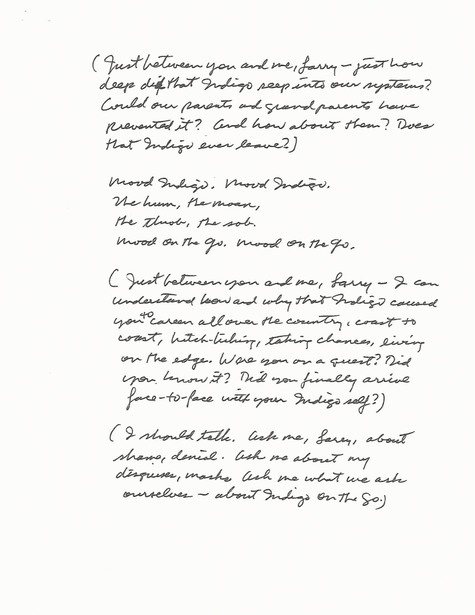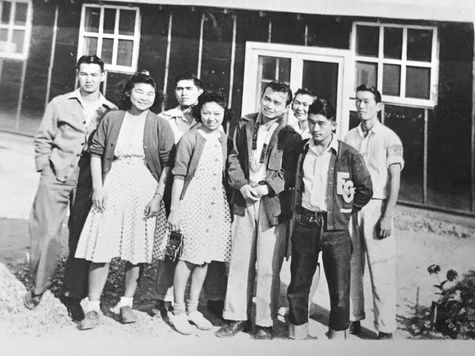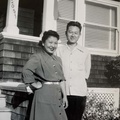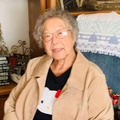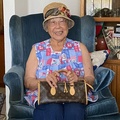What does the band play specifically?
Mainly swing, Glen Miller type stuff. Then I was asked to direct this youth band in Portland and it was called the Minidoka Swing Band. We went up to Minidoka, presented the band, that’s part of it. Then the band kept on going after this pilgrimage because we wanted to bring young people up to Minidoka to show them what that was, you know, Japanese, Asian youth. So then it kept going and we as a band became more of an adult band and kept performing under the Minidoka Swing Band title.
Later I collaborated with Lawson Inada who was the poet laureate in Oregon and made up a jazz ensemble featuring his poetry and storytelling. Our trumpet player’s father, Ben Homer, wrote “Sentimental Journey.” We set up a series of concerts where I would play “Mood Indigo,” to his poetry called “Mood On The Go”, a poem about my life. This was the predecessor to my playing of “Mood Indigo” along with the family video. We did several performances, including Lewis and Clark University, Willamette University, Unitarian Church (Portland), Hood River, The Old Church and a few others.
Then we showed the video of our family interned in Jerome. I played “Mood Indigo” which is about four minutes, 30 seconds. It’s written by Duke Ellington and it’s the bluest of blue, so it’s a very sad song.
Another person in the band, Nola, sang “Embraceable You” which is a song representing a lack of intimacy in the camp, no privacy. And she experienced that. Later on she did “Tuxedo Junction,” which is the train leaving the internment camps and going home. So we used musical themes to present this program about internment and that’s how the video was used. And we went to Japan and played.
During our Japan Tour in November 2015, I helped designed a presentation which would tell the story of internment through video, personal experiences, and music. Four of us had been interned: Henry ‘Shig’ Sakamoto (Minidoka), Nola Sugai Bolge (Minidoka), Lawrence ‘Larry Nobori (Jerome), and my brother George Nobori (Jerome). Todd and Elaine Yuzurhia were not interned but Elaine’s father was a no-no boy. And so each of us were assigned a piece to describe a part of internment.
Larry sent me a breakdown of everybody’s solo and its correlating meaning:
Shig Sakamoto: “Sentimental Journey.” Written by the father of our lead trumpet Rick Homer, “Moonlight Serenade” (youth and dance), “Blue Skies” (the war is over).
Nola Sugai Bogle: “Embraceable You” (lack of intimacy), “Tuxedo Junction” (Denver Station leaving internment).
Todd Yuzurhia: “Boogie Woogie Bugle Boy (call to arms for the 442nd and the No-No Boys)
Larry Nobori: “Mood Indigo” Nobori family video while interned in Jerome Arkansas, inspired by Lawson Inada’s “Mood On The Go.”
We did full performances in Fujisawa, Tokyo, Minamisoma, and Gotemba. The committee that gave us our grant evaluated our performance to determine how much of the grant they would give us. We received a 100% of the grant plus an offer to come back and perform in Hiroshima, Osaka, Kyoto.
Do you play several instruments?
I mainly play mostly saxophone and clarinet. I actually played classical clarinet when I was living in the Bay Area but I moved up here and I switched to jazz. I never made it into the big time like the symphony or anything like that. I decided to teach school and I taught for about eight years in Berkeley. We came up here in ’78. And that’s when I decided that no one knows who I am so I thought I was just going to practice and play jazz.
Is the Minidoka Swing Band still performing?
The grant committee offered us the possibility of doing another tour, which would be in three to four years. It is unlikely that Shig and Nola would be able to do another tour in that time. We’ve got four concerts this month already, including New Year’s Eve. And Nola said, “I can’t do this anymore, I’m worn out.” And she’s older than me, and her voice is not the same. She’s just worn out and even though I don’t think so, that’s her decision. And this was just a couple of days ago.
I may be the last link to internment camps in the Minidoka Swing Band. As the director, I will continue to perform with the remaining members of the band.
After Larry’s parents left camp, they settled in Cleveland. Here they are pictured in August 1943, in their new neighborhood.
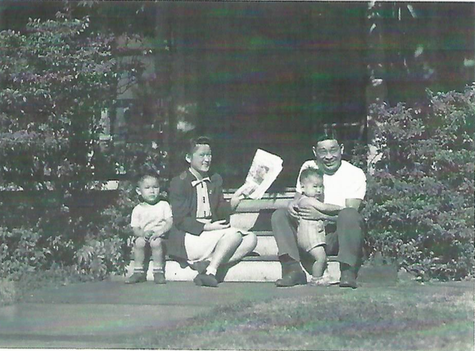
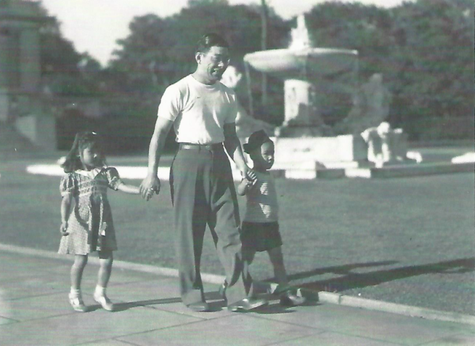
*This article was originally published on Tessaku on December 20, 2016.
© 2017 Emiko Tsuchida



